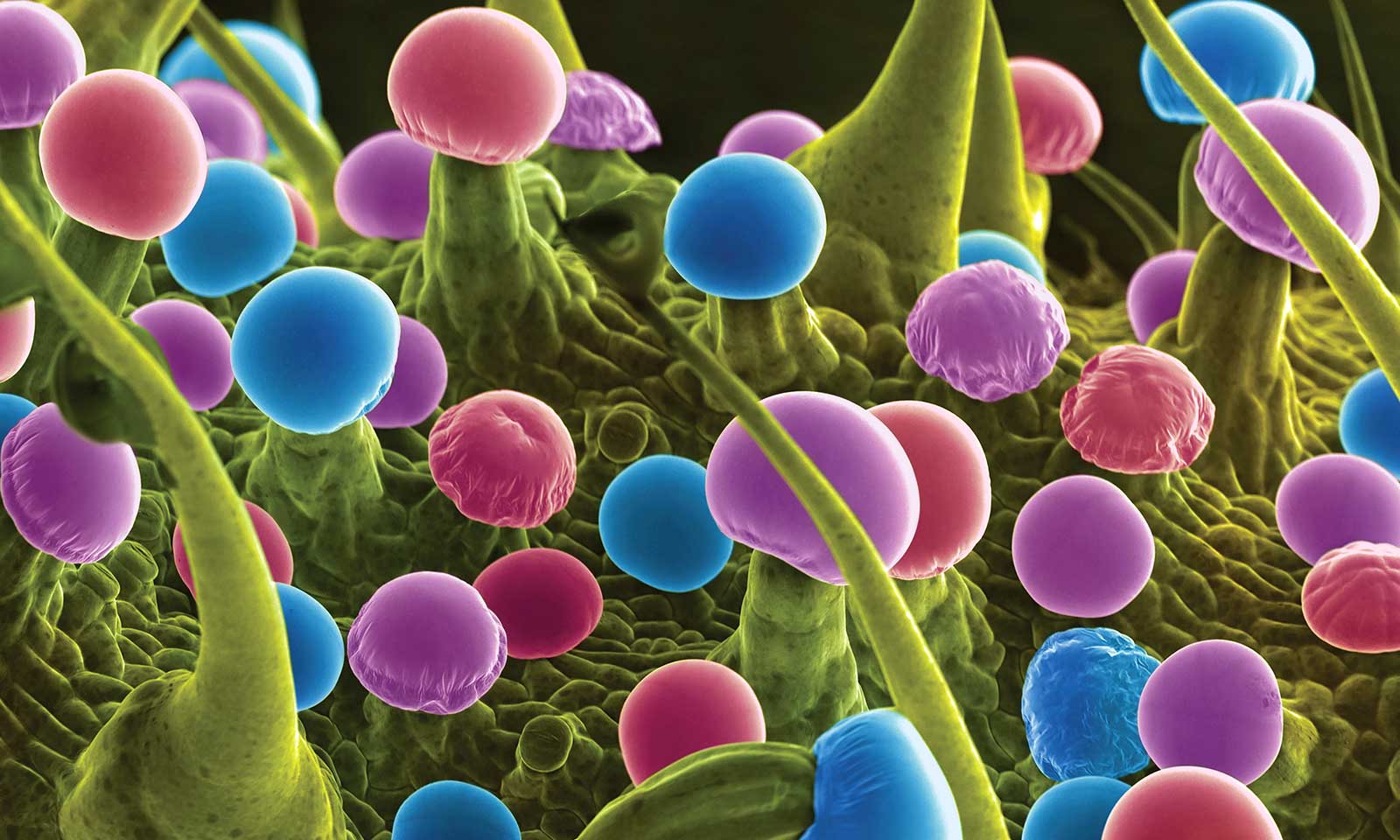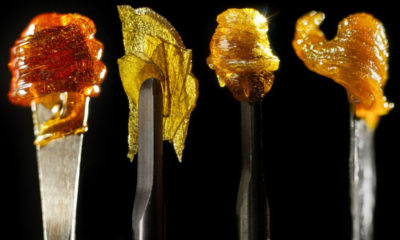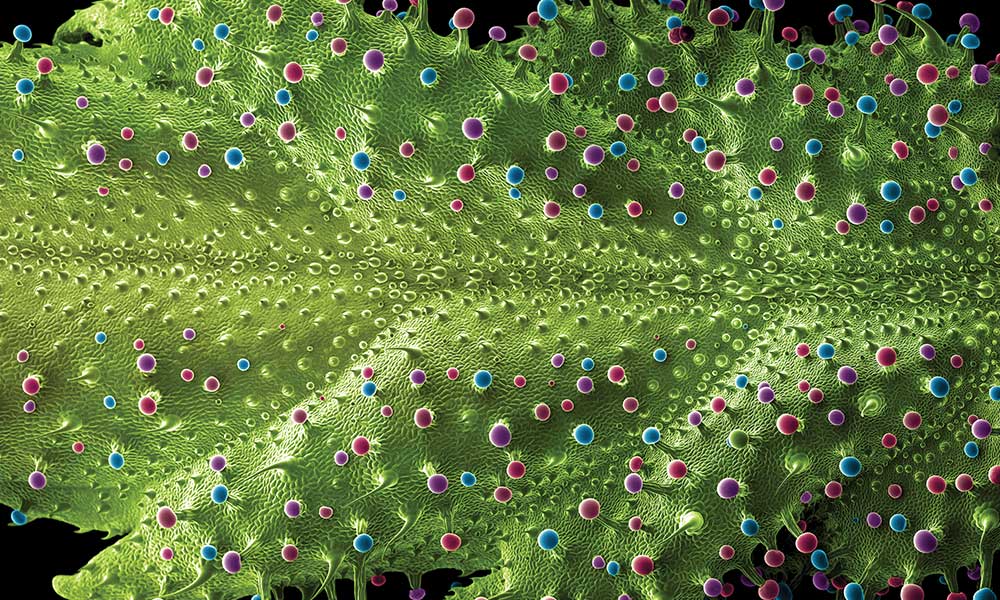Book Review: ‘Cannabis: Marijuana Under the Microscope’
A photography professor depicts the inner workings of our favorite flower through up-close images.
If it’s true that we eat with our eyes first, then the same might be said about smoking and cannabis. Just the sight of a perfectly fluffy, emerald green bud or dense, deep green-purple nug is enough to make any marijuana aficionado or cannabis connoisseur shed a tear of joy. There are books, calendars, posters, shirts, accessories and more that celebrate the unique beauty of the cannabis plant, but rarely do these go beyond showcasing a super close shot that gets a good look at the fibrous hairs or shimmering trichomes. Within the plant is a whole other world and “Cannabis: Marijuana Under the Microscope”offers a concentrated look at what’s really going on beneath the surface. The collection of images from Ted Kinsman is all about the breathtaking beauty of a botanical wonder that has been utilized for medical, recreational and sacred purposes since antiquity. It displays the anatomical features in a way that most people have understandably never experienced and inspires a deeper appreciation of the elaborate process of a maturing cannabis plant, from seed to blossom. It’s a short and sweet compilation (128 pages) of photographic art and botanical science that opens up with a brief foreword and introduction before jumping directly into the pictures.
The collection of images from Ted Kinsman is all about the breathtaking beauty of a botanical wonder that has been utilized for medical, recreational and sacred purposes since antiquity. It displays the anatomical features in a way that most people have understandably never experienced and inspires a deeper appreciation of the elaborate process of a maturing cannabis plant, from seed to blossom. It’s a short and sweet compilation (128 pages) of photographic art and botanical science that opens up with a brief foreword and introduction before jumping directly into the pictures.
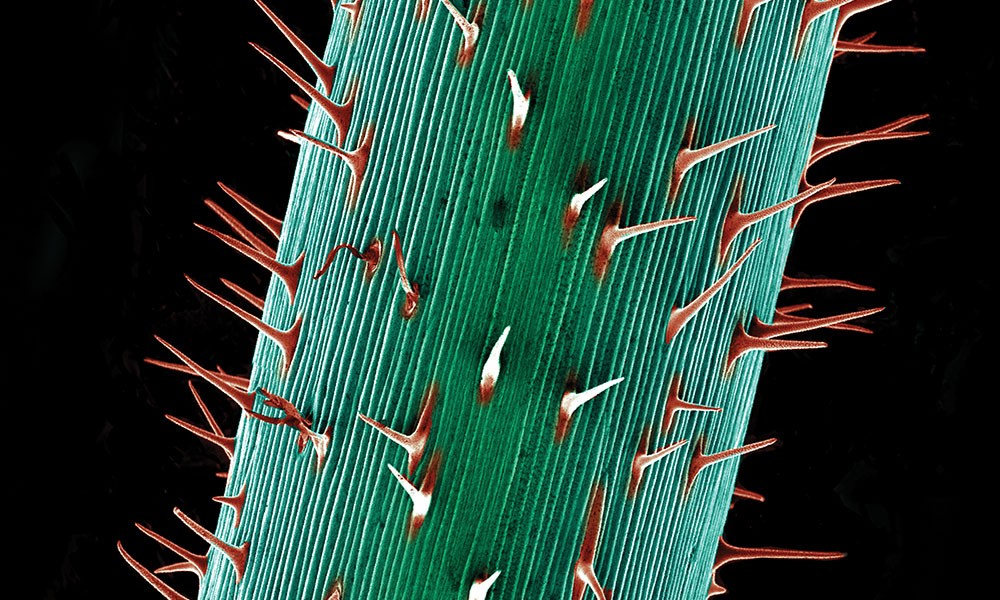
The stem of a five-day-old cannabis seedling is covered with needle-like trichome structures that keep insects from climbing the stem and eating the tender leaves.
Within the book, there’s a lot to learn from each of the 140 color images, including a sea of THC-drenched trichomes speckled all over a maturing flower, an endlessly porous cross-section from a stem, a glimpse of the structural complexity of a root extending from a newly germinated seed and the cyclical cells that transport water and nutrients to the plant. There are also microscopic images of the skin on the plant’s stem, defensive structures developed during the formation of a new leaf that’s eager to protect itself and even an X-ray of a bud bursting with seeds that are ready to be harvested. And that’s just for starters.
Photographers or photography enthusiasts will definitely appreciate the technical skill used to capture such in-depth and precise images. Kinsman is an associate professor who teaches high-speed photography and scanning electron microscopy in the Photographic Sciences Department at Rochester Institute of Technology and has degrees in science education, optics and physics. There are both visible light macro images that were photographed with either a macro lens or a light microscope and scanning electron microscope images that were later digitally colorized.
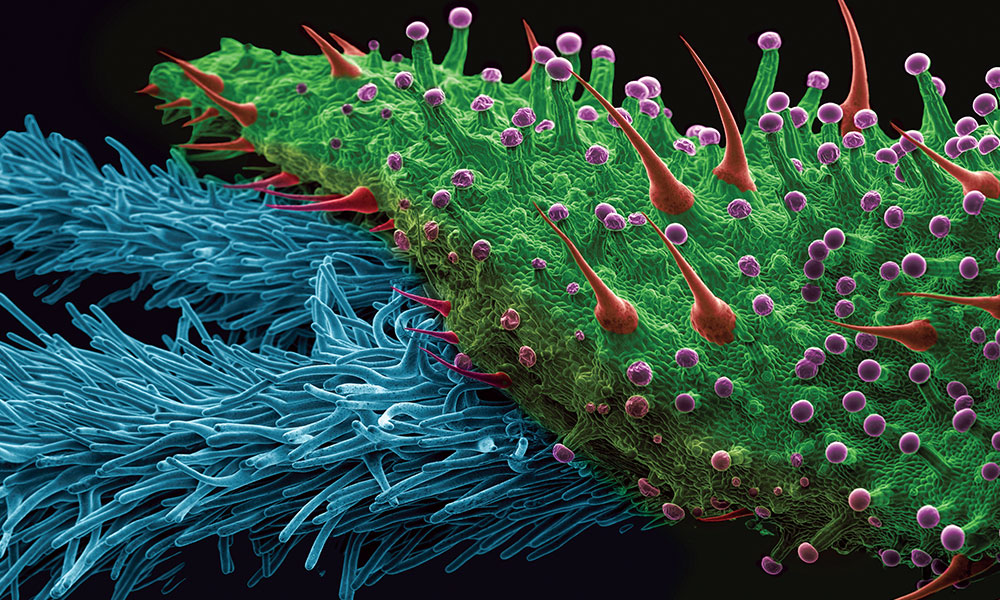
A SEM image of the stigma and the beak-shaped bract on a cannabis plant. The bract is covered in a carpet of different types of trichomes and contains the highest diversity of glandular trichome types on the plant. The role of the glandular trichomes in this area is to protect the flower and resulting seed from insect attack.
Readers don’t necessarily have to be interested in or know much about science to appreciate this book. Kinsman thoughtfully omits the names for parts of the plants that are complex or hard to pronounce and offers direct, simple descriptions that allow readers to still grasp the intricacy of the image before their eyes. However, people who only have a minimal interest in cannabis outside of the experience of consuming it might be a little bored, even though the pictures are fascinating enough on their own.
People who have never cared to know more about strain profiles, genetics, cultivation techniques (indoor, outdoor, light dep, etc.) or other factors that go into creating the best parts of cannabis may not be moved by an image featuring multiple types of trichomes on a single bud. But for those who find themselves curious about cannabis beyond getting high, this book is another gem to add their collection that can help deepen their understanding and provide insight into the inner workings of one of their favorite things.
Originally published in Issue 32 of Cannabis Now. LEARN MORE
TELL US, are you an avid reader?



